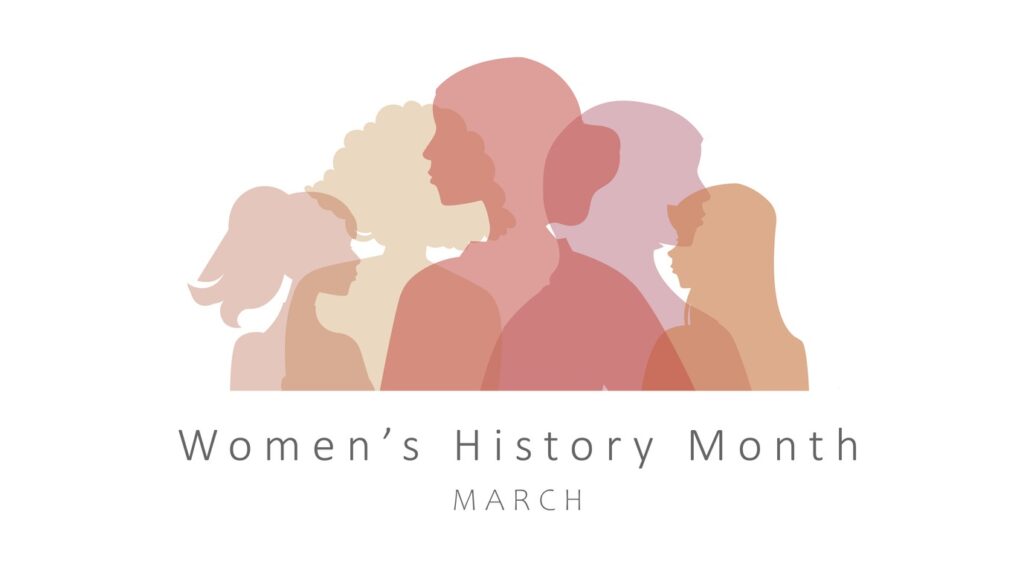
This Women’s History Month, I have been inspired by the Attagirls X-formerly-Twitter feed (@TheAttagirls – named in honour of women pilots of WW2), which highlights a different woman each day, sharing their extraordinary stories, from well-known women like Hedy Lamarr (inventor of the pre-cursor to wi-fi) and Ada Lovelace (the first computer programmer) to the less well-known, such as Matilda Joslyn Gage (suffragette; abolitionist; and eponym for the ‘Matilda effect’: the tendency to deny women credit for scientific invention) and Caroline Herschel (the first woman to discover a comet; to receive a salary as a scientist; and, in England, to hold a government position). It is fascinating read and I thoroughly recommend it, if only to remind yourself that women weren’t just by-standers or decorations to history, we made history.
The legal world has its fair share of pioneering women.
Eliza Orme LLB, for example, was the first woman in England to earn a law degree. She was one of 9 women who, in 1869, sat the first General Examination at University College London, with the intention to open up legal advocacy for women, believing that financial independence was the most important thing for women, regardless of class.
Having been initially refused entry to one of the Inns of Court, Eliza put her knowledge and legal education to good use and opened a Chambers, with two other women, in Chancery Lane, where they were paid by barristers and solicitors to prepare documents for conveyancing, wills and mortgages.
She became Senior Lady Assistant Commissioner to the Royal Commission on Labour and was invited to join a Departmental Committee on Prison Conditions.
The daughter of a suffragette, Betty Archdale was the inaugural Test captain of the England women’s cricket team in 1934; a qualified barrister; and Women’s Royal Naval Service veteran, having served in Singapore from July 1941 and subsequently being awarded an OBE for helping nurses escape from the conflict.
In 1946, Betty was appointed principal of Sydney University‘s Women’s College, before becoming headmistress of a private girls school in Wahroonga, where she was credited with breaking down the rigid system of discipline at the school, introducing sex education, and abandoning gloves and hats as part of the school uniform, as well as reforming the curriculum to include physics and Australian (rather than British) history.
(Betty Archdale | Inner Temple)
Then there is Beatrice Davy, who moved to London from her family home in Devon to study law at Kings College. Having been admitted as a student member of the Middle Temple in 1920, and graduating in 1921, she was among the 8 women who, in 1922, were the first to be called to the Bar at the Middle Temple.
Beatrice was the first woman to appear at the Devon assizes, where she successfully appeared for an abandoned husband in an undefended divorce case (Weber v. Weber & Payne).
In a contributing chapter to J. A. R. Cairns’s Careers for Girls (1928), she described the process of becoming a barrister, and the costs involved, commenting that ‘For a woman who must earn her own living, the Bar is the very last profession in the world’.
In 1931, she went into practice as a solicitor, forming a partnership with Edith Berthen as Messrs Berthen & Davy of London, where Madge Easton Anderson was articled and subsequently joined the partnership following qualification, to create Messrs Berthen, Davy & Anderson. The firm survived until 1951.
She was an advocate for the National Council for the Unmarried Mother and Her Child (NCUM), which was concerned with the welfare of unmarried mothers and their children, as well as the legislation affecting illegitimacy and the stigma attached to it, giving evidence on behalf of the Council to the House of Lords select committee against the proposed Bastardy (Blood Test) Bill, arguing that the science was not sufficiently advanced to be of use in law courts.
Remaining in practice until 1951, Beatrice was died of cerebral thrombosis, cerebral arteriosclerosis, and arthritis of the hips, at her home in West Sussex, in 1966.
(Beatrice Davy | Inner Temple)
Resilient and determined, these are just a few of the long line of women in law who pushed boundaries and opened doors for generations of women to follow them.
Raising each other up, creating spaces for one another, is how we can level the playing field in what has traditionally been a male-dominated field; it’s how we measure how far we have come, how much we still have to do, and how we make sure we get there.
I have the good fortune to work in a firm where over 50% of the staff is female, with women visible in leading roles: in the 20 years I have been here, our joint-Senior Partner, our joint-Managing Partner and our CEO have all been women; and I am part of an all-female residential real estate team.
Indeed, my career has been shaped by generous and supportive women – it was the (now retired) joint-Managing Partner, along with a Commercial Property Partner I worked for at the time, who set me on the path to qualification; our Senior Partner, the inimitable Valerie Brecher, taught me “you catch more flies with honey than with vinegar”, an important lesson in private practice, and something I now find myself passing on to our trainees; and my Head of Department, who continues to shape and refine my legal practice with good humour and inordinate patience.
So, my thanks to the women who had such a positive influence on my career: Lisa Mantle, Nicky Richmond and Valerie Brecher; and to those who continue to help me on my way: Jacqui McCoy, Alyson Thornton-Clark, Matilda Everest-Wild, Judith Stacy, Elizabeth Balogun, Mahsa Tavakol.




